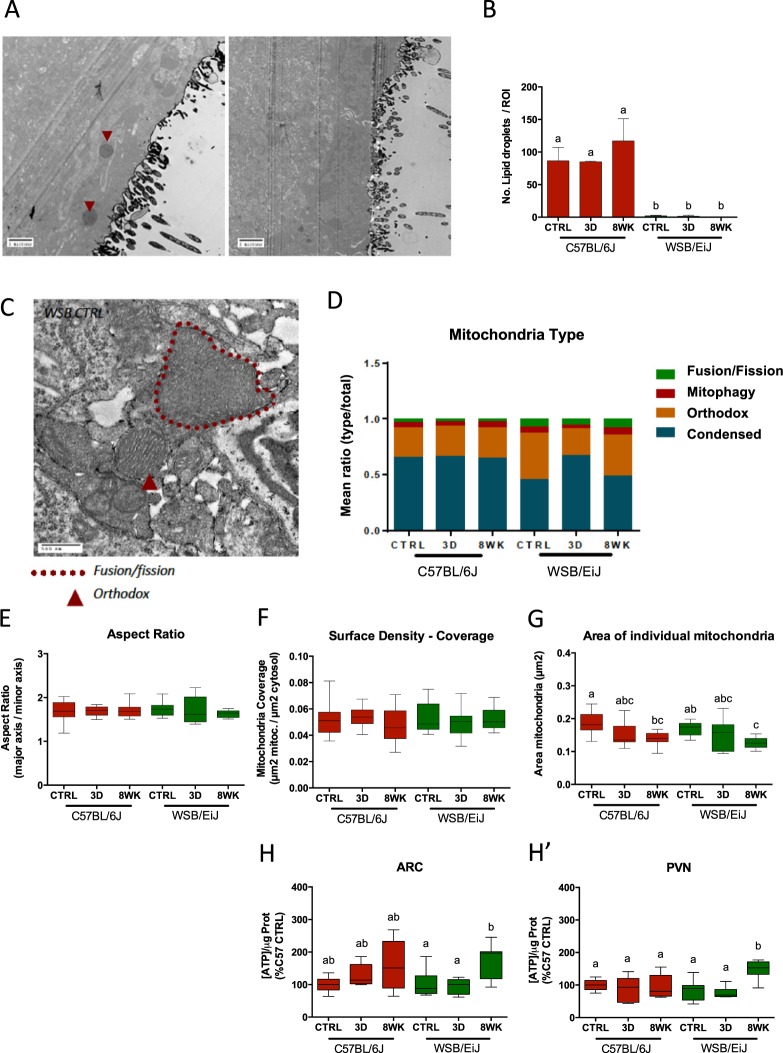Figure 7.
Mitochondria are more responsive to HFD in the WSB/EiJ strain than in the C57BL/6J in PVN region. Compared analysis of mitochondrial parameters in twelve week-old C57BL/6J and WSB/EiJ male mice either maintained under control feeding (CTRL), or challenged with HFD for the last 3 days of the period (3D) or during the whole 8-week experiment duration (8WK). (A–G) TEM analysis of mitochondria in parvocellular neurons of the PVN: A. Representative TEM image of presence (left panel) or absence (right panel) of lipid droplets (indicated with red arrows) in C57BL/6J and WSB/EiJ mice, respectively; (B) Quantitation of the number of lipid droplets revealing no lipid droplet accumulation in the WSB/EiJ strain as opposed to C57BL/6J mice; (C) Representative TEM image of fusion-like events observed in WSB/EiJ control-fed mice; (D) Quantitation of mitochondrial states in parvocellular neurons of the PVN. Mitochondria in WSB/EiJ were more responsive to HFD, and transiently changed morphology to more active states: in WSB/EiJ lower percentage of condensed mitochondria (found under conditions of high activity) transiently increased after 3d HFD to C57BL/6J levels, at expenses of percentage of orthodox states (normally found under standard conditions and activity); (E) Aspect Ratio of mitochondria calculated as the ratio between mitochondria major axis and minor axis; (F) Mitochondria surface density or coverage calculated as the ratio between area covered by mitochondria and the total cytosolic area; (G) Area of individual mitochondria. No significant difference in mitochondrial aspect ratio or coverage was detected. However, HFD decreased size of mitochondria in both strains, suggesting fission induced by HFD exposure. (H-H′). Analysis of the ATP content of ARC (H) or PVN (H′) in both strains revealed that WSB/EiJ, but not C57BL/6J, increased their ATP content under 8 weeks HFD. Significant differences were indicated by different letters on top of bars (P ≤ 0.05).

